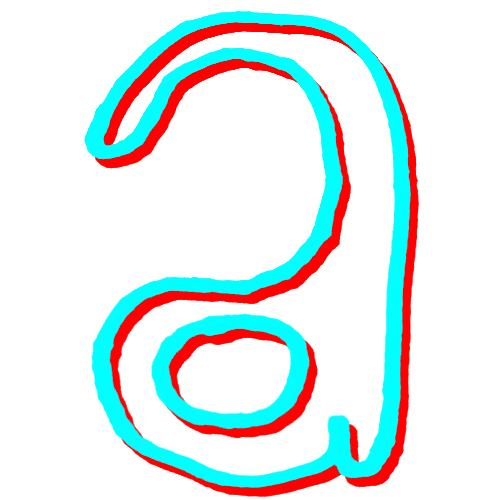Buddhist Sentiment in Linda Gregg’s “The Calves Not Chosen”
Linda Gregg had three self-described passions: nature, the sacred, and romantic love. [1] One of her main concerns was how a poem can reveal something to us we innately understand about what we might call heart or spirit; how the poem itself can be the vehicle that gives full expression to the experience of that understanding, what she calls “luminosity.” [2] While Gregg, at times, employed Judeo-Christian and Greco-Roman myth to illuminate sacred nature and romantic love, little attention is paid to Buddhist karmic concepts in her work. I will show here how “The Calves Not Chosen” [3] maps the Buddhist teachings of the Four Noble Truths:
1. Suffering pervades human existence.
2. All suffering is attributable to our attachments.
3. Suffering can be ended by recognizing and relinquishing our attachments.
4. There is a path that enables enlightenment and liberation from suffering.
Gregg makes an important choice in the opening line: “The mind goes caw, caw, caw, caw,” which locates the sounds of the natural world in the thinking mind (line 1). From a Buddhist perspective, major sources of suffering are our dogmatic attitudes and conceptual attachments to what is and is not natural (i.e., what might be seen as following from either divine law or from a natural order). While the line does not yet reveal this aspect of the Second Noble Truth, in its taking of the conceptualizing mind as the subject of its opening line, Gregg signals there may be an attendant ego to contend with. Additionally, the conceptualizing mind’s action is “dark and fast” (line 2), paralleling the discursive nature of the thinking mind, which is part of the ego mechanisms that disembody the human person—in this context, another source of human suffering.
More explicit language of suffering—specifically alienation—first appears as “The orphan heart / cries out” (lines 2-3). The heart, seat of consciousness in some somatic meditative traditions, is orphaned. Gregg employs an extreme metaphor of separation—of child from parent through death—to evoke suffering directly. Gregg, through the “orphan”, along with the heart’s petition in the lines that follow:
…“Save me. Purchase me
as the sun makes the fruit ripe.
I am one with them and cannot feed
on winter dawns.”…(3-6)
creates a stand-in for manifold triggers of suffering enumerated in Buddhist teachings: birth, aging, sickness, death, and separation from what we desire.
What follows from this crying out is transportation to a natural world, arguably free of judgment and human hang-ups. Gregg uses the image of “black birds” (line 6), presumably those associated with the thinking mind’s “caw,” in their natural habitat to explore fundamental Buddhist concepts, including: human expectation as a source of suffering, duality/non-duality, and equanimity. Notice that Gregg does not label the black birds in terms of common species name (e.g., raven, crow), which is typically considered a left-brain organizing function associated with somatic dissociation. Gregg chooses instead to depict them as plainly as possible. In fact, the choice to describe the birds as simply “black” is consistent with Gregg’s imperative to “see carelessly,” which I take to mean notice plainly, and without agenda (Gregg 2006).
Gregg’s description of the black birds as “wrangling in the fields” (line 7), “hav[ing] no kindness” (line 8), and “murderous with each other” (line 12) can, on initial reading, connote a more unpleasant nature. However, Gregg may have an alternative purpose in using language typically associated with aggression: the poem challenges the reader to interrogate their emotional associations with such descriptions. One might even see this process as the reader (analogous to the spiritual practitioner) being compelled by the poet (i.e., the spiritual teacher) to confront their assumptions behind their judgments and moral frameworks. In fact, Gregg may simply be describing a natural state that is actually free from undue struggle—no doubt a state of tension, but not one of unnecessary suffering caused by intrinsic malevolence. The birds are wrangling in the fields because that’s what birds do; there is no kindness because there is no need of kindness. The birds are “all sinew / and stick bones” (lines 8-9). Any interjection of negativity in the reading of these lines would be a specific cognitive attachment to moralistic judgment, and therefore substrate for meditation in and of itself.
In this middle section of the poem (lines 6-12), Gregg employs tandems (e.g., “all sinew / and stick bones,” “Both male and female,” “both day and night”) that suggest integration rather than irreducible dualism. Sinew and bones are critical to structure and function. Male and female are considered countervailing energetic forces in some spiritual traditions. Day and night represent cosmic harmony. Furthermore, in this use of “all” and “both,” Gregg acknowledges the non-dualistic nature of absolute reality, which is a step towards spiritual liberation in the Buddhist framework.
Gregg continues to challenge the conceptualizing mind as the arbiter of truth. The birds’ “eyes are careless of cold and rain, / of both day and night.” (lines 10-11). Here, “careless” is taken to mean indifferent or accepting in the context of Gregg’s previously mentioned directive to “see carelessly” (Gregg 2006). Further, the birds “love nothing” (line 11) in alignment with the Buddhist concept of non-attachment, which is a critical development on the path to liberation from suffering (and is in contrast to a Western conceptualization of romantic love). Again, Gregg poses a non-value-laden alternative to an otherwise conventional concept.
Further, the Fourth Noble Truth recognizes an 8-fold path toward enlightenment. A prerequisite for this is to accept impermanence—that a deep acceptance of change (including the inevitability of our own deaths) is fundamental to cultivating non-attachment, equanimity, and ending suffering. Acknowledging and remembering the perpetual nature of change guards against the problems of desire and attachment.
This epiphany is realized in what acts as the volta of the poem:
All things of the world are bowing
or being taken away. Only a few calves
will be chosen, the rest sold for meat. (13-15)
While these lines suggest many possible destinies for the main subjects of the poem (the calves), in reality the final destination for the calves (and humans), chosen or not, will be the same (death) no matter how they get there. Pointedly, Gregg’s title emphasizes the calves not chosen, which equates the human with the animal. This challenge to human exceptionalism is critical for deconstructing unhelpful thought processes (the activator of the “caw”), which would, in this spiritual context, create a person more capable of clarity.
The final four lines extend the analogy of the 8-fold path and end in full realization: “The sound of the wind grows bigger / than the tree it’s in, lessens only / to increase” (16-18). I read this as a metaphor for what transpires on the journey toward liberation from suffering. “The sound of the wind” (the greater consciousness that arises as we become more skilled within the 8-fold path) “grows bigger than the tree it’s in” (the ego-identity), and temporarily lessens (refuge to allow integration of newfound realizations) only to increase (continued transformation). In the penultimate line, the “caw” of the thinking mind from the poem’s opening line is transformed to a “haw.” The haw is the truer sound a crow makes, Gregg suggests, if we were to listen without received preconceptions. Further, the four opening “caws” are revised to just two final “haws,” and are attributed directly to the birds as opposed to the mind’s figuration of their sound—a transition out of the discursive and superfluous into harmony. The black birds are finally named (“crows”), suggesting an earned placement within our greater basic nature, “awake or asleep, in white, in black” (19). The last two lines signify ultimate liberation. We are released from the primacy of what Buddhism refers to as the small mind (of line 1)—the analytical, discursive, conceptualizing mind that is the driver behind our notions of solid, separate ego-selves.
Essential to the Four Noble Truths is an understanding that suffering is cyclical, and unless we self-liberate, we are destined to repeat and propagate this cycle. Gregg ends the poem where it begins—in the crows’ sound—but differently, so that the shift in our understanding—arguably towards a recognition of our own unobscured, unconditioned selves (i.e., “Buddha-nature” in certain Buddhist traditions)—co-arrives with the sonic and conceptual enactment of these truths.
Notes
[1] Linda Gregg, “Craft Talk: Craft of the Invisible” Palm Beach Poetry Festival, January 2014, https://www.youtube.com/watch?v=aTCLqu_V1y8.
[2] —————, “The Art of Finding” Poets.org, Academy of American Poets, October 24,2006, poets.org/text/art-finding.
[3] ————— Things and Flesh (Minneapolis: Graywolf Press, 1999), (6).


